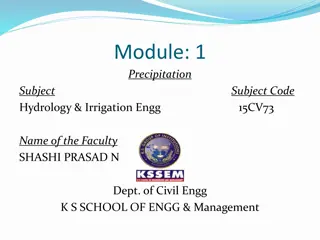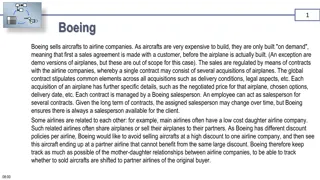Understanding Characteristics and Types of Salespersons
Exploring the characteristics, types, and essential knowledge for salespersons, including the importance of product knowledge, sources of information, classification of customers, and successful selling strategies. Discover the qualities that make a good salesman, diverse types of sales situations, and selling as a promising career choice.
Download Presentation

Please find below an Image/Link to download the presentation.
The content on the website is provided AS IS for your information and personal use only. It may not be sold, licensed, or shared on other websites without obtaining consent from the author. Download presentation by click this link. If you encounter any issues during the download, it is possible that the publisher has removed the file from their server.
E N D
Presentation Transcript
CHARACTERISTICS AND TYPES OF SALESPERSONS (INCLUDING TYPES OF SELLING SITUATIONS AND SELLING AS A CAREER)
CHAPTER OBJECTIVES Characteristics of a Good Salesman Physical, Psychological, Social, Character and Technical Qualities What Salesman Should Know ? Sources of Product Knowledge Knowledge and Classification of Customers Types of Salesmanship Types of Salespersons Secrets of Success in Selling Line
WHAT SALESMAN SHOULD KNOW ? The next pertinent question to be answered is as to what a salesman is supposed to know about his products ? Product knowledge here, does not confine strictly to the concept of product. It covers a wide range of allied areas that hover around the product. Among other things, the major areas of product knowledge can be at least six. These are : His Firm His Products His Market His Competitors Government Policies His Distribution System
SOURCES OF PRODUCT KNOWLEDGE BASIC SOURCES Education and Training Personal Experience Colleagues Sales Literature Advertisements Sales meetings and conferences Visits to Factories and Show-rooms and Exhibitions MISCELLANEOUS SOURCES Motion Pictures and Visual Aids Training Schemes and Courses Travelling Demonstrations Public Libraries Best Solution Schemes Contacts with Customers
FRUITFUL USE OF KNOWLEDGE Organise the Collected Information Matching Specification s for Market Integration Update the Knowledge Bring Home the Benefits Never to Offend Others Avoid Technical Jargon Cut to the Core
CLASSIFICATION OF CUSTOMERS There is no one way of classifying the customers. Among others, the most commonly accepted bases of classification are temperament, sex, age, area, purpose of buying and number of customers. Thorough knowledge of the nature of customer and the way he or she is to be tackled goes a long way in building his professional career with brilliant success.
TYPES OF SALESMANSHIP One can classify the profession of persuasion as creative and competitive . On the other hand, it can be also possible to classify as travelling and counter salesmanship. These are not water-tight compartments. One classification is not a perfect substitute for another. They are mutually inclusive but not exclusive. A kind of overlapping occurs irrespective of the classification followed.
TYPES OF SALESPERSONS The types of salespersons, one comes across, can be classified on the basis of organisation, the goods they sell and the services they render.
ON THE BASIS OF GOODS SOLD On the basis of goods being sold, one can broadly think of two types of salesmen namely, Staple and Speciality. ON THE BASIS OF SERVICE RENDERED Salesmen can also be classified on the basis of services rendered. There can be at least four types of salesmen if one goes by service rendered. That way, each salesman renders a valuable service of sales generation. However, specific service rendered by them make us to identify them as follows. 1. House to House Salesmen 2. Missionary Salesmen 3. Service Salesmen 4. Exporter s Salesmen
SECRETS OF SUCCESS IN SELLING LINE An Optimistic Outlook A Strong Desire To Achieve Love For Selling Industriousness Care For Valuable Time Service Orientation Knowledgeability Good Listening























